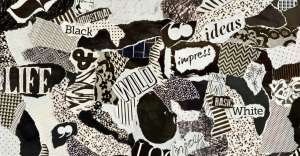The Nauvari saree pattern is more than just a piece of cloth; it is a timeless tradition that embodies the essence of Maharashtrian culture. Worn by women across generations, the Nauvari saree, also known as the Kashta saree, has a unique draping style that sets it apart from other sarees in India. Its distinctive pattern and historical significance make it an iconic symbol of the region's heritage.
Origins and Historical Significance
The word "Nauvari" is derived from the Marathi word "nau," meaning nine, and "vari," meaning yards. Unlike the six-yard sarees typically worn in other parts of India, the Nauvari saree is a nine-yard garment. Its origin dates back to the Maratha era, where women wore this saree style to enable greater freedom of movement, especially during wartime when they had to accompany men on the battlefield. This practical draping allowed women to participate in physical activities, making it a symbol of strength and resilience.
The Nauvari saree also holds a special place in the cultural and religious traditions of Maharashtra. It is an integral part of the traditional attire worn during festivals like Ganesh Chaturthi, Diwali, and Navratri. The saree is also worn by brides during their wedding ceremonies, symbolizing the purity and elegance of the bride.
Draping Style and Patterns
The Nauvari saree is draped differently compared to other sarees, making it a unique garment. The most common draping style is the "Kashta," where the saree is tucked at the back and brought between the legs, resembling the style of a dhoti. This draping technique gives the saree its distinctive look, with the pleats neatly tucked at the back, allowing for ease of movement.
The draping style of the Nauvari saree varies across different regions of Maharashtra. For instance, in the Pune region, the pleats are tucked on the right side, while in the Kolhapur region, they are tucked on the left. These regional variations add to the diversity and richness of the Nauvari saree tradition.
In terms of patterns, the Nauvari saree often features traditional motifs like peacocks, paisleys, and floral designs. These patterns are intricately woven into the fabric using techniques like handloom weaving, which has been passed down through generations. The saree is usually made of silk or cotton, with the borders and pallu (the loose end of the saree) adorned with rich zari (gold or silver thread) work. The use of vibrant colors like red, green, yellow, and blue adds to the saree's allure, making it a visual treat.
Contemporary Adaptations
In recent years, the Nauvari saree has seen a resurgence in popularity, with contemporary designers reimagining the traditional garment for modern women. Fashion designers are experimenting with fabrics, colors, and draping styles to make the Nauvari saree more versatile and accessible. The saree has also found its way into Bollywood, with actresses donning Nauvari sarees in films set in Maharashtra, further popularizing the attire.
Many women today wear the Nauvari saree on special occasions, combining tradition with contemporary style. The saree's versatility allows it to be paired with modern blouses and accessories, giving it a fresh, stylish look while retaining its traditional charm.
For More Info:-





